
Lombardy is an administrative region of Italy that covers 23,844 km2 (9,206 sq mi); it is located in northern Italy and has a population of about 10 million people, constituting more than one-sixth of Italy's population. Lombardy is located between the Alps mountain range and tributaries of the river Po, and includes Milan, its capital, the largest metropolitan area in the country, and among the largest in the EU.

Legnano is a town and comune (municipality) in the province of Milan, about 20 kilometres (12 mi) from central Milan. With 60,259, it is the thirteenth-most populous township in Lombardy. Legnano is located in the Alto Milanese and is crossed by the Olona River.

The province of Varese is a province in the Lombardy region of Italy. Its capital is the city of Varese, but its largest city is Busto Arsizio. The headquarters of AgustaWestland, the company merged into Leonardo since 2016 and the world's largest producer of helicopters, is based in Samarate, a comune (municipality) of the province. As of 2015, it has a population of 889,410 inhabitants over an area of 1,198.11 square kilometres (462.59 sq mi). The province contains 139 comuni.

The province of Milan was a province in the Lombardy region of Italy. Its capital was the city of Milan. The area of the former province is highly urbanized, with more than 2,000 inhabitants/km2, the third highest population density among Italian provinces, just below the densities of the provinces of Naples and of Monza e Brianza, the latter of which was created in 2004 from the north-eastern part of the province of Milan. On 1 January 2015 the province was replaced by the Metropolitan City of Milan.
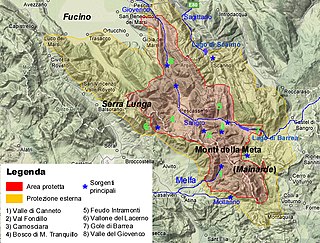
Abruzzo, Lazio and Molise National Park is an Italian national park established in 1923. The majority of the park is located in the Abruzzo region, with smaller parts in Lazio and Molise. It is sometimes called by its former name Abruzzo National Park. The park headquarters are in Pescasseroli in the Province of L'Aquila. The park's area is 496.80 km2 (191.82 sq mi).
San Giorgio su Legnano is a comune (municipality) in the Metropolitan City of Milan in the Italian region Lombardy, located about 20 kilometres (12 mi) northwest of Milan.

The fauna of Europe is all the animals living in Europe and its surrounding seas and islands. Europe is the western part of the Palearctic realm. Lying within the temperate region, the wildlife is not as rich as in the hottest regions, but is nevertheless diverse due to the variety of habitats and the faunal richness of Eurasia as a whole.

The Olona is an Italian river belonging to the Po Basin, 71 kilometres (44 mi) long, that runs through the Province of Varese and Metropolitan City of Milan whose course is developed entirely in Lombardy.
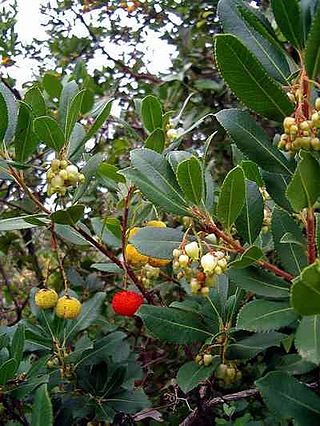
The flora of Italy is all the plant life present in the territory of the Italian Republic. The flora of Italy was traditionally estimated to comprise about 5,500 vascular plant species. However, as of 2019, 7,672 species are recorded in the second edition of the flora of Italy and in its digital archives Digital flora of Italy. In particular, 7,031 are autochthonous and 641 are non native species widely naturalized since more than three decades. Additionally, further 468 exotic species have been recorded as adventitious or naturalized in more recent times.

The fauna of Italy comprises all the animal species inhabiting the territory of the Italian Republic and its surrounding waters. Italy has the highest level of faunal biodiversity in Europe, with over 57,000 species recorded, representing more than a third of all European fauna. This is due to various factors. The Italian peninsula is in the centre of the Mediterranean Sea, forming a corridor between central Europe and North Africa, and it has 8,000 km (5,000 mi) of coastline. Italy also receives species from the Balkans, Eurasia, and the Middle East. Italy's varied geological structure, including the Alps and the Apennines, Central Italian woodlands, and Southern Italian Garigue and Maquis shrubland, also contribute to high climate and habitat diversity.

Titnore Wood is an area of ancient woodland to the north-west of Worthing in West Sussex. With neighbouring Goring Wood it forms one of the last remaining blocks of ancient woodland on the West Sussex coastal plain.

Parco Agricolo Sud Milano is a large protected rural area located south and south-east of Milan, Italy. The park was established in 1990 with the purpose of preserving, safeguarding, and enhancing the natural and historical heritage of the Po Valley. It is 47,000 hectares wide and shaped like a half-circle, located between Milan and the southern border of its Province. It also connects two other large protected natural areas: Ticino Park to the west and Adda Park to the east.
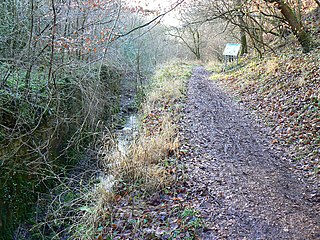
Siccaridge Wood is a 26.6-hectare (66-acre) nature reserve in Gloucestershire. The site is listed in the ‘Stroud District’ Local Plan, adopted November 2005, Appendix 6 as a Key Wildlife Site (KWS).

The hydrography of Milan and the area of the neighboring municipalities is particularly complex, both for natural causes, given the conspicuous presence of rivers, streams and fountains that form a real water tangle, and for issues related to the work of canalization and diversion of waterways made by man, having their beginning during the Roman era, which led to the creation of numerous irrigation ditches, canals and lakes.
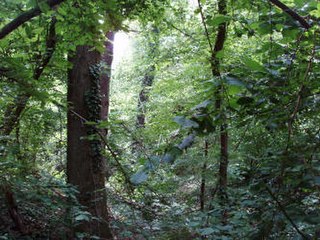
The Strict nature reserve Bosco Siro Negri is a protected natural area owned by the University of Pavia in Italy and included in the Parco naturale lombardo della Valle del Ticino.

The Maritime Alps Natural Park is a nature reserve in Piedmont, Italy. Originally established in 1980 as the Argentera Natural Park, in an area previously part of a royal hunting reserve established by Victor Emmanuel II in 1857, it assumed its current name and form in 1995, when it was merged with the Palanfrè Woods and Lakes Natural Reserve. Located near the border with France, the park borders the Mercantour National Park.

The Parco delle Groane e della Brughiera Briantea is a nature reserve in Lombardy, Italy. Established in 1976 and enlarged in 2017, it covers over 8,000 hectares of woods and moorlands in the upper Po Plain northwest of Milan, across the territory of 28 municipalities in the provinces of Milan, Como and Monza.

The watermills on the Olona River are buildings used for milling activities that are scattered along the banks of the Olona River in the Lombardy region of Italy.
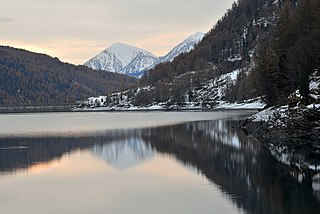
The Monviso Natural Park is a nature reserve in Piedmont, Italy. Established in 2016 and enlarged in 2019, it encompasses the Monviso, the highest mountain in the Cottian Alps, and the surrounding area between the Valle Po and the Valle Varaita, part of the UNESCO biosphere reserve of Monviso. The lowest point is in the plain of Cuneo, 240 meters above sea level, whereas the highest point is the peak of the Monviso, 3,841 meters above sea level.
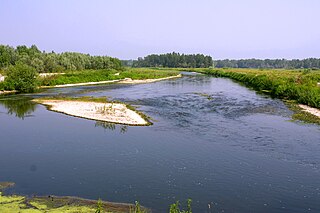
The Parco naturale lombardo della Valle del Ticino is a Nature reserve established on 9 January 1974. It was the first Italian regional park to be established and the first European river park. The park is located along the banks of the river Ticino, in Lombardy, in the provinces of Milan, Pavia and Varese, in an area of 91,410 hectares between Lake Maggiore and the Po. The park borders the Parco naturale della Valle del Ticino, located on the other side of the river in Piedmont, created in 1978. In 2022 the two Parks were included by UNESCO in the World Network of Biosphere Reserves.

























